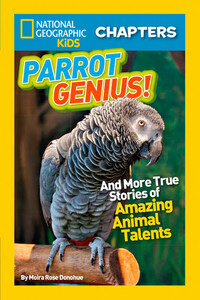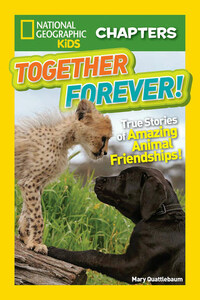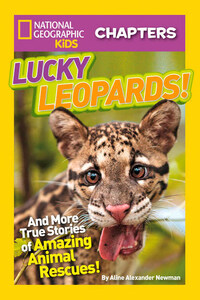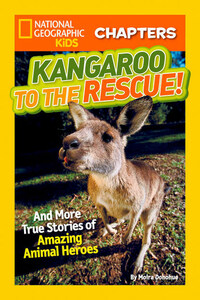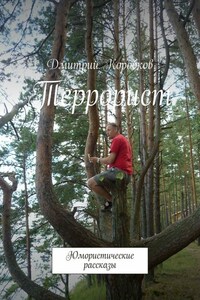Copyright © 2014 National Geographic Society
All rights reserved. Reproduction of the whole or any part of the contents without written permission from the publisher is prohibited.
Published by the National Geographic Society
Gary E. Knell, President and Chief Executive Officer
John M. Fahey, Chairman of the Board
Declan Moore, Executive Vice President; President, Publishing and Travel
Melina Gerosa Bellows, Publisher and Chief Creative Officer, Books, Kids, and Family
Prepared by the Book Division
Hector Sierra, Senior Vice President and General Manager
Nancy Laties Feresten, Senior Vice President, Kids Publishing and Media
Jennifer Emmett, Vice President, Editorial Director, Kids Books
Eva Absher-Schantz, Design Director, Kids Publishing and Media
Jay Sumner, Director of Photography, Kids Publishing
R. Gary Colbert, Production Director
Jennifer A. Thornton, Director of Managing Editorial
Staff for This Book
Shelby Alinsky, Project Editor
Amanda Larsen, Art Director
Kelley Miller, Senior Photo Editor
Ruth Ann Thompson, Designer
Marfé Ferguson Delano, Editor
Ariane Szu-Tu, Editorial Assistant
Callie Broaddus, Design Production Assistant
Grace Hill, Associate Managing Editor
Joan Gossett, Production Editor
Lewis R. Bassford, Production Manager
Susan Borke, Legal and Business Affairs
Production Services
Phillip L. Schlosser, Senior Vice President
Chris Brown, Vice President, NG Book Manufacturing
George Bounelis, Senior Production Manager
Nicole Elliott, Director of Production
Rachel Faulise, Manager
Robert L. Barr, Manager
The National Geographic Society is one of the world’s largest nonprofit scientific and educational organizations. Founded in 1888 to “increase and diffuse geographic knowledge,” the Society’s mission is to inspire people to care about the planet. It reaches more than 400 million people worldwide each month through its official journal, National Geographic, and other magazines; National Geographic Channel; television documentaries; music; radio; films; books; DVDs; maps; exhibitions; live events; school publishing programs; interactive media; and merchandise. National Geographic has funded more than 10,000 scientific research, conservation, and exploration projects and supports an education program promoting geographic literacy.
For more information, please visit nationalgeographic.com, call 1-800-NGS LINE (647-5463), or write to the following address:
National Geographic Society, 1145 17th Street N.W., Washington, D.C. 20036-4688 U.S.A.
Visit us online at nationalgeographic.com/books
For librarians and teachers: ngchildrensbooks.org
National Geographic supports K–12 educators with ELA Common Core Resources. Visit natgeoed.org/commoncore for more information.
More for kids from National Geographic: kids.nationalgeographic.com
For information about special discounts for bulk purchases, please contact National Geographic Books Special Sales: [email protected]
For rights or permissions inquiries, please contact National Geographic Books Subsidiary Rights: [email protected]
Trade paperback ISBN: 978-1-4263-1770-5
Reinforced library edition ISBN: 978-1-4263-1771-2
eBook ISBN: 978-1-4263-1772-9
v3.1
Version: 2017-07-10
Imagine you’re at the zoo. You hear a tiger growl. That’s not surprising. Lots of zoos have tigers. But what if you’re nowhere near the tiger exhibit? Next you hear a chimp screech. But there are no chimps around. And then a pirate says, “Arrgh!” Is it some kind of trick? Not if you’re at the Knoxville (sounds like NOX-vil) Zoo in Knoxville, Tennessee, U.S.A. It means you’ve just found Einstein, one of the most amazing parrots in the world!
Did You Know?
Albert Einstein was a German-born scientist. He was considered a genius and won a Nobel Prize. He also owned a parrot named Bibo.
Einstein joined the Knoxville Zoo more than 20 years ago. The zoo wanted to put together an animal show. It hired an animal talent scout. That’s someone who looks for awesome animals that can learn to perform. When the talent scout heard about a very smart five-year-old parrot named Einstein, he knew he had to meet her.
Einstein is an African gray parrot. In the wild, African grays live in large groups called flocks. Some flocks have 100 birds. Living in such large groups makes them social, or friendly, with each other.
African gray parrots live in the rain forests of Africa. But Einstein was not born in Africa. She was hatched in California. Einstein’s owners could tell that she was extra smart. That’s why they named her after the scientist Albert Einstein. He was so smart that people called him a genius!
